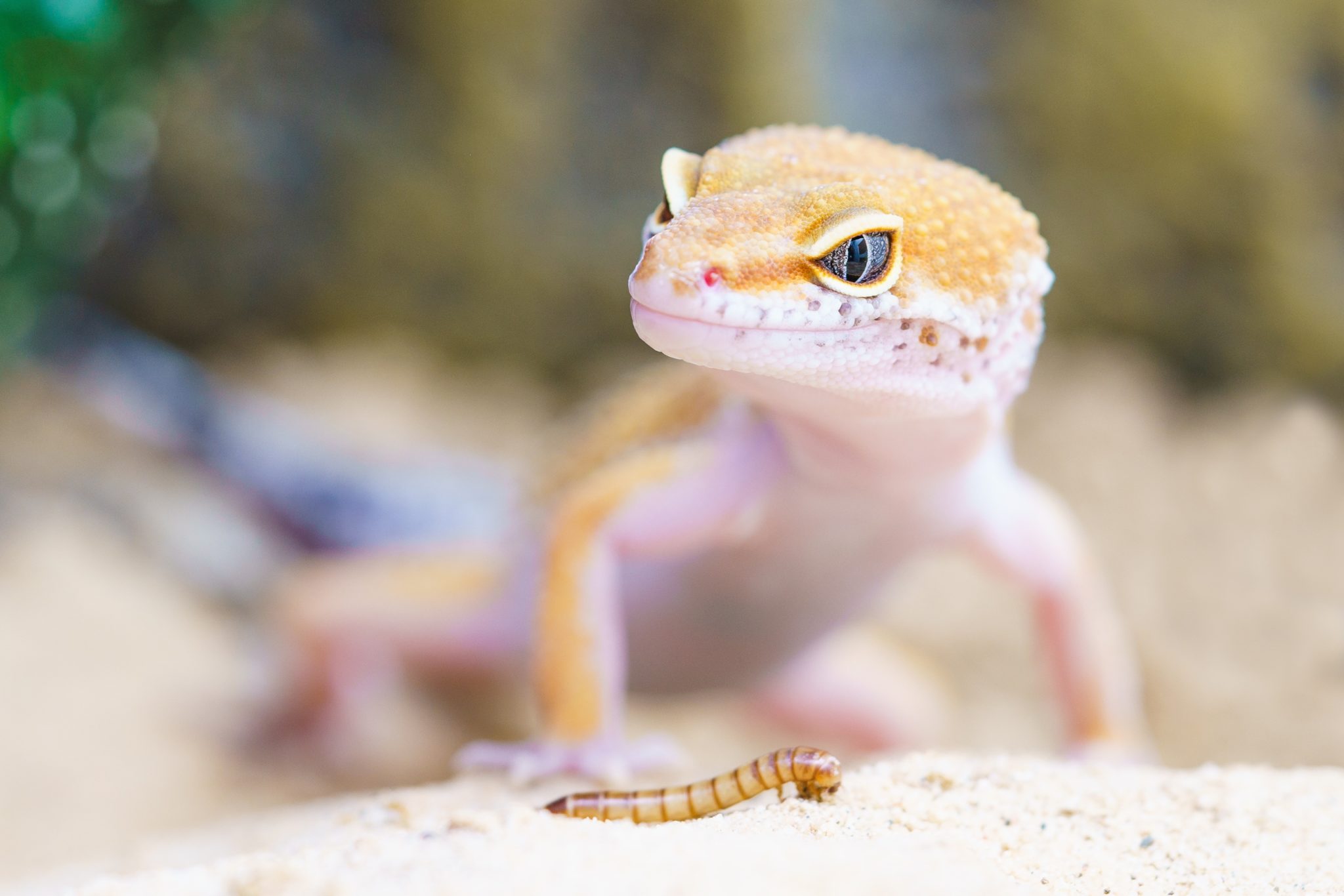Lizards are ideal pets because in a sense, they don’t need to be housebroken. Most of the time, they remain in their terrariums unless you decide to take them out. It is exciting to bring your new reptile friend home, but you may be asking yourself, “What do I feed him?” The first thought that may come to mind is bugs and leafy plants, because those things are what lizards in the wild munch on. However, domestic lizards are fed a little differently. An Atlanta long-term pet sitter explains what the best dietary options for your lizard…
Lizards that Eat Plants
What you choose to feed your lizard is dependent on their feeding preferences. Some lizards are herbivorous, meaning that they eat a strictly plant-based diet. A few examples of pet lizards that are herbivorous include:
- Iguanas
- Uromastyx
- Chuckwalla
Some of the most common dietary options for herbivorous lizards, depending on factors like their age, size, and species, are listed below:
- Broccoli
- Cabbage
- Kale
- Swiss chard
- Bok choy
- Cantaloupe
- Apples
- Leafy greens
- Honeydew melon
- Strawberries
- Yellow squash
- Turnip greens
- Collard greens
- Ripened weeds

Different herbivorous lizards will prefer certain foods depending on where their species derived from. For example, the uromastyx breed comes from north Africa and is accustomed to a hot and arid climate. After basking in the sun, they prefer foods such as fruit and cactus flowers. Similarly, bearded dragons also come from an arid climate, and therefore, they prefer food that provides not only nutrients but hydration as well.
Lizards that Eat Animals
On the opposite end of the spectrum from plant-eating lizards are carnivorous lizards. These types of lizards only consume insects, rodents, and other animal products. Some examples of lizards that are carnivorous include:
- Geckos
- Anoles
- Ackies
Some of the most common foods that may be appropriate to feed carnivorous lizards, depending on their size and species, include:
- Crickets
- Waxworms
- Mealworms
- Grasshoppers
- Silkworms
- Fruit flies
- Cockroaches
- Wax moth larvae
- Flies
- Cicadas
- Tomato hornworms
- Fish
- Pill bugs
- Mice
It is important to note that among carnivorous lizards, some of them are strictly insectivorous, meaning their diets consist partially or completely of insects. Other carnivorous lizards feed mostly on rodents, such as mice. Carnivorous lizards may also feed on fish, larvae, and butter worms.
Omnivorous Lizards
Lizards that are omnivorous eat a variety of foods. They may feed on a combination of vegetables, fruits, rodents, and insects. Some lizards have different dietary patterns depending on what stage of life they are in. For example, as juveniles, bearded dragons will eat mostly insects with a small amount of greens. As they age, their diets will consist of mostly plants. Some examples of omnivorous lizards include:
- Bearded dragons
- Veiled chameleons
- Plated lizards
The ratio of insects and rodents to vegetables and fruits will vary depending upon the type of lizard that is being fed. Some examples of food that are part of the diets of omnivorous lizards include:
- Cat food
- Insects
- Small rodents
- Low-fat dog food
- Monkey biscuits
- Yellow squash
- Alfalfa
- Melon
- Berries
- Bananas
- Papaya
- Leafy greens
- Carrots
- Green beans
Talking to your local vet about your lizard and its nutritional needs is probably the best way to determine what dietary plan will work best. Age, size, and natural habitat are all important factors in determining what foods will be most beneficial and nourishing for your pet.
How to Feed a Lizard
First and foremost, it is important to provide your lizard with fresh water that is changed daily. Some smaller lizards will not drink from a bowl. In that case, spray water onto the lizard itself or on the vegetation in their terrarium. For lizards that will drink from a bowl, be sure to purchase a heavier bowl with a wide base that cannot be tipped over.
The frequency of feeding will depend on what type of food your lizard eats. Lizards whose diet consists only of insects should generally be fed every 2 to 3 days, while large, carnivorous lizards should generally be fed every 4 to 5 days. Your local vet should be able to provide you with feeding times that are tailored to your lizard’s size and breed. If you are going on vacation and need a sitter to feed and care for your pet lizard or reptile, contact the Atlanta reptile sitters at Critter Sitters and find out what services we can provide for you.
Atlanta, GA Pet Sitters for Lizards, Reptiles, Frogs, and Snakes
If you have a pet lizard that needs to be cared for while you are away, call the Atlanta pet sitters at Critter Sitters today. In addition to caring for and feeding your pet lizard, we will also water your plants, pick up your mail, and turn the lights on and off. We also will care for any additional pets at a much lower cost. Call the Georgia lizard and reptile sitters at Critter Sitters today at 404-793-6178, or contact us online to get started.


